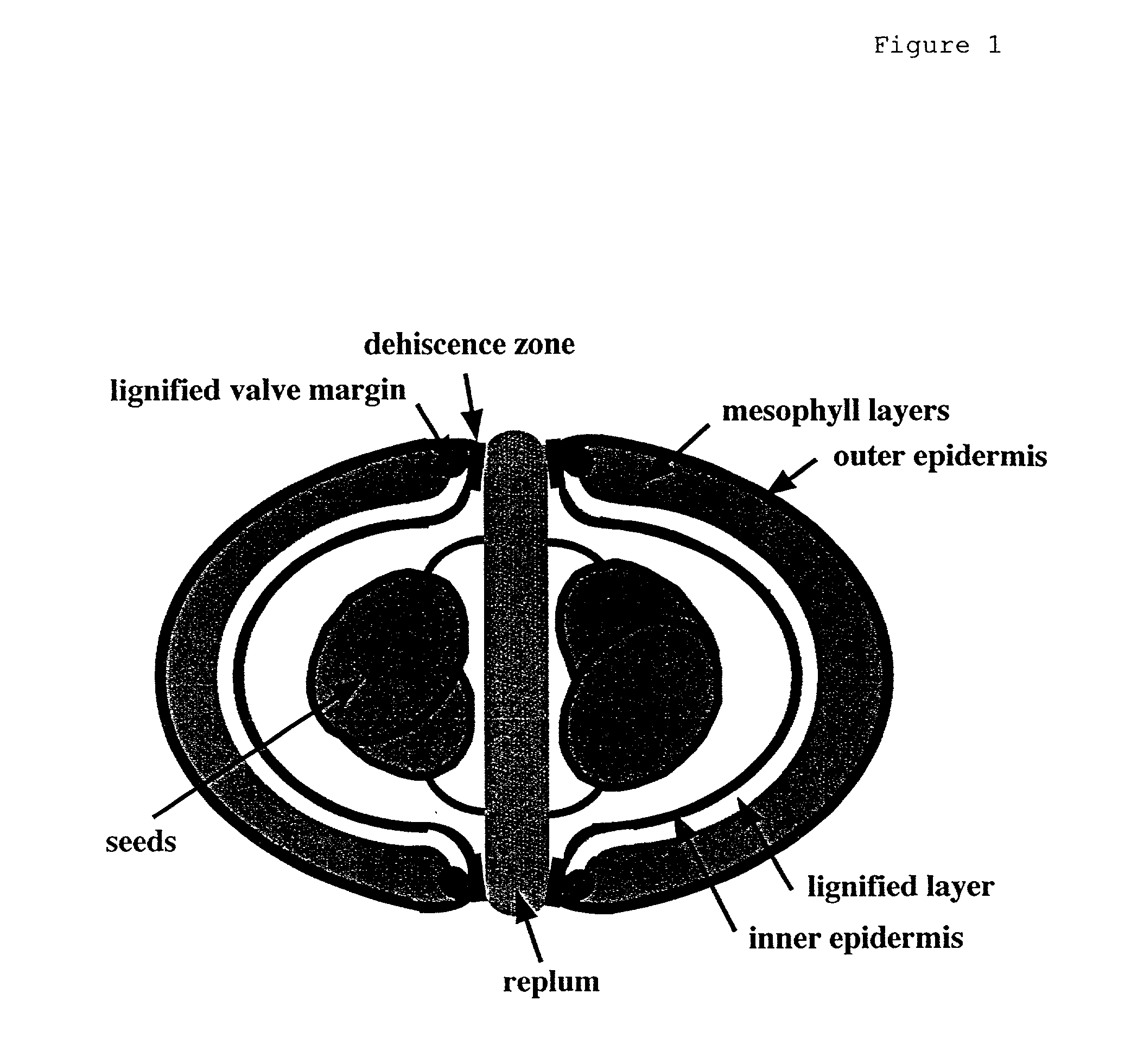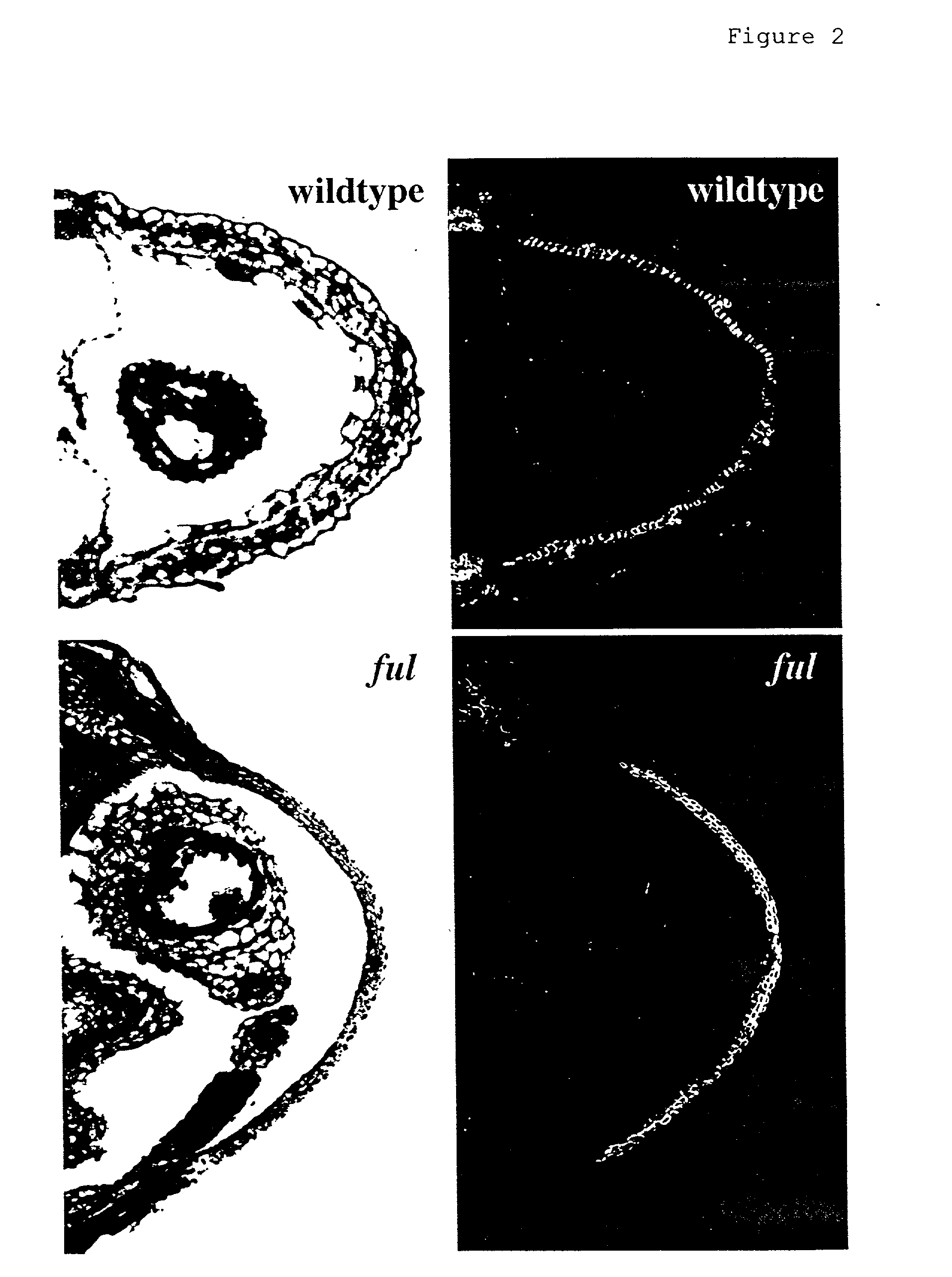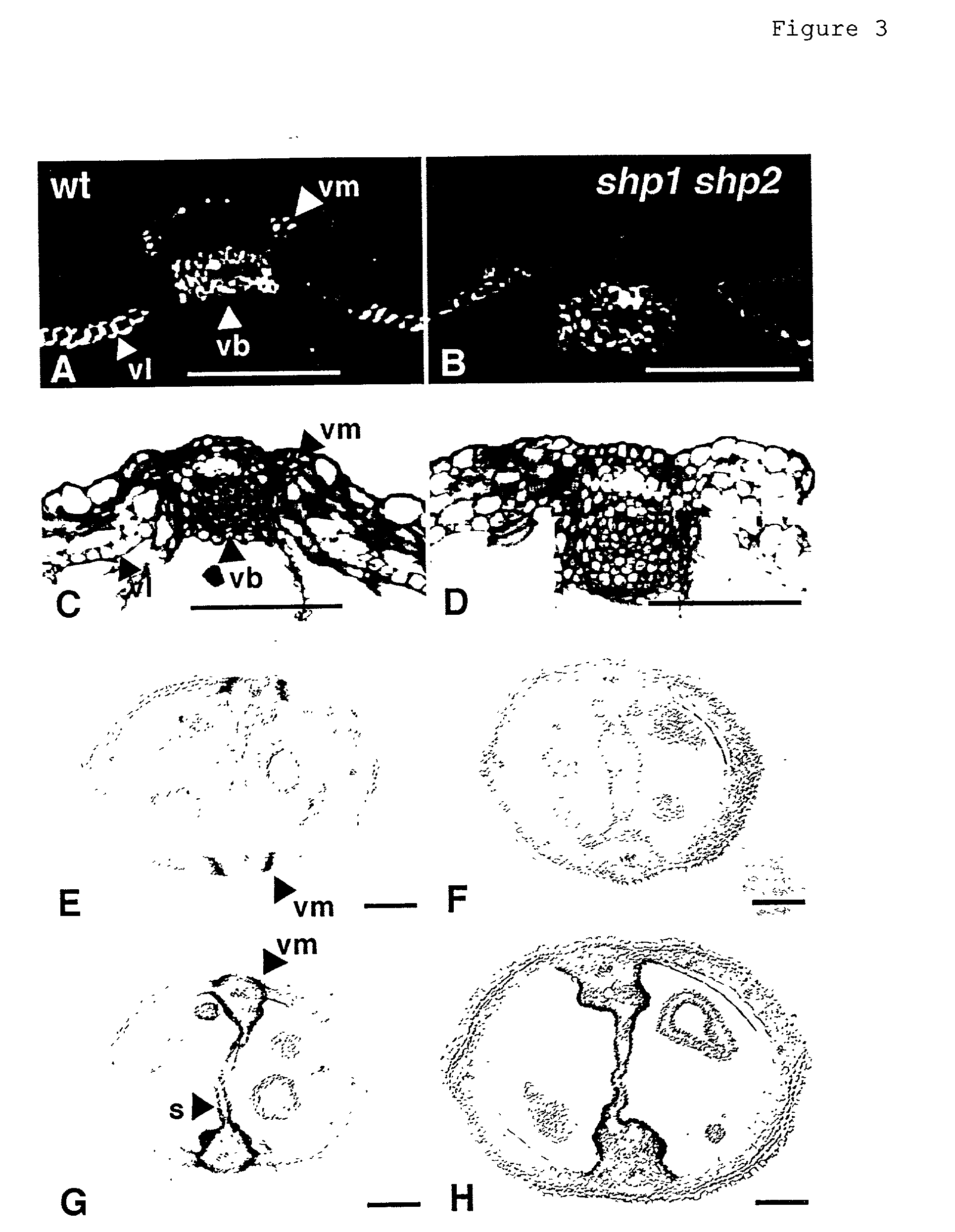Selective control of lignin biosythesis in transgenic plants
a technology of lignin biosythesis and transgenic plants, applied in biochemistry apparatus and processes, gymnosperms, bryophytes, etc., can solve the problems of high lignin content, lignin resistance has a negative impact on certain agricultural and industrial uses of plants, and lignins are believed to limit forage digestibility
- Summary
- Abstract
- Description
- Claims
- Application Information
AI Technical Summary
Benefits of technology
Problems solved by technology
Method used
Image
Examples
example ii
Production of an Arabidopsis agl1 agl5 Double Mutant Displaying Reduced Lignification
[0141] This example describes the production of an agl1 agl5 double mutant displaying reduced lignification.
[0142] A. Production of an agl5 Mutant by Homologous Recombination
[0143] A PCR-based assay of transgenic plants was used to identify targeted insertions into AGL5 as described in Kempin et al., Nature 389:802-803 (1997), which is incorporated herein by reference. The targeting construct consisted of a kanamycin-resistance cassette that was inserted between approximately 3 kb and 2 kb segments representing the 5' and 3' regions of the AGL5 gene, respectively. A successfully targeted insertion produces a 1.6 kb deletion within the AGL5 gene such that the targeted allele encodes only the first 42 of 246 amino acid residues, and only 26 of the 56 amino acids comprising the DNA-binding MADS-domain. The recombination event also results in the insertion of the 2.5 kb kanamycin-resistance cassette wit...
example iii
Production of an agl8 Mutant Arabidopsis Plant Displaying Enhanced Lignification
[0158] This example describes methods for producing a non-naturally occurring plant characterized by enhanced lignification due to suppression of AGL8 expression.
[0159] A. Production of an agl8 Mutant
[0160] A mutation designated ful-1 was identified using large scale insertional mutagenesis with enhancer and gene trap Ds transposable elements (Sundarsen et al., supra, 1995; Springer et al., Science 268:877-880 (1995), each of which is incorporated herein by reference). This system utilized the maize Ac / Ds transposable elements and the reporter gene GUS. Transposition events were selected and screened for reporter gene expression patterns and mutant phenotypes. The ful-1 mutant was identified in the F3 progeny of an enhancer trap line. Backcrossing to wild type Landsberg erecta confirmed that ful-1 is a recessive mutation.
[0161] To address whether the ful-1 mutation was caused by insertion of the Ds-GUS e...
example iv
Production of 35S::AGL1 and 35S::AGL1 35S::AGL5 Transgenic Plants Displaying Enhanced Lignification
[0166] This example describes methods for producing transgenic Arabidopsis plants characterized by enhanced lignification due to constitutive expression of AGL1 or constitutive expression of AGL1 and AGL5.
[0167] A. Production of Transgenic Plants Expressing AGL1 or AGL5 under control of the CaMV 35S promoter
[0168] Transgenic 35S::AGL1, 35S::AGL5 and 35S::AGL1 35S::AGL5 plants were generated as follows. A full length AGL1 cDNA was created by fusing the EcoRI fragments of pCIT2241 and pCIT4219 (Ma et al., supra, 1991). The AGL1 cDNA was subsequently cloned into the BamH1 site of pCGN18 (Jack et al., Cell 76:703-716 (1994)) such that AGL1 transcription was under control of the viral 35S promoter (Benfey and Chua, supra, 1990).
[0169] A full-length AGL5 cDNA was PCR amplified with oligonucleotide primers SEQ ID NO:18 (5'-GGAGATCTGAATTCATCTTCCCATCC-3') and SEQ ID NO:19 (5'-CCGGTACCTCAAACAAGT...
PUM
| Property | Measurement | Unit |
|---|---|---|
| rigidity | aaaaa | aaaaa |
| resistance | aaaaa | aaaaa |
| temperatures | aaaaa | aaaaa |
Abstract
Description
Claims
Application Information
 Login to View More
Login to View More - R&D
- Intellectual Property
- Life Sciences
- Materials
- Tech Scout
- Unparalleled Data Quality
- Higher Quality Content
- 60% Fewer Hallucinations
Browse by: Latest US Patents, China's latest patents, Technical Efficacy Thesaurus, Application Domain, Technology Topic, Popular Technical Reports.
© 2025 PatSnap. All rights reserved.Legal|Privacy policy|Modern Slavery Act Transparency Statement|Sitemap|About US| Contact US: help@patsnap.com



